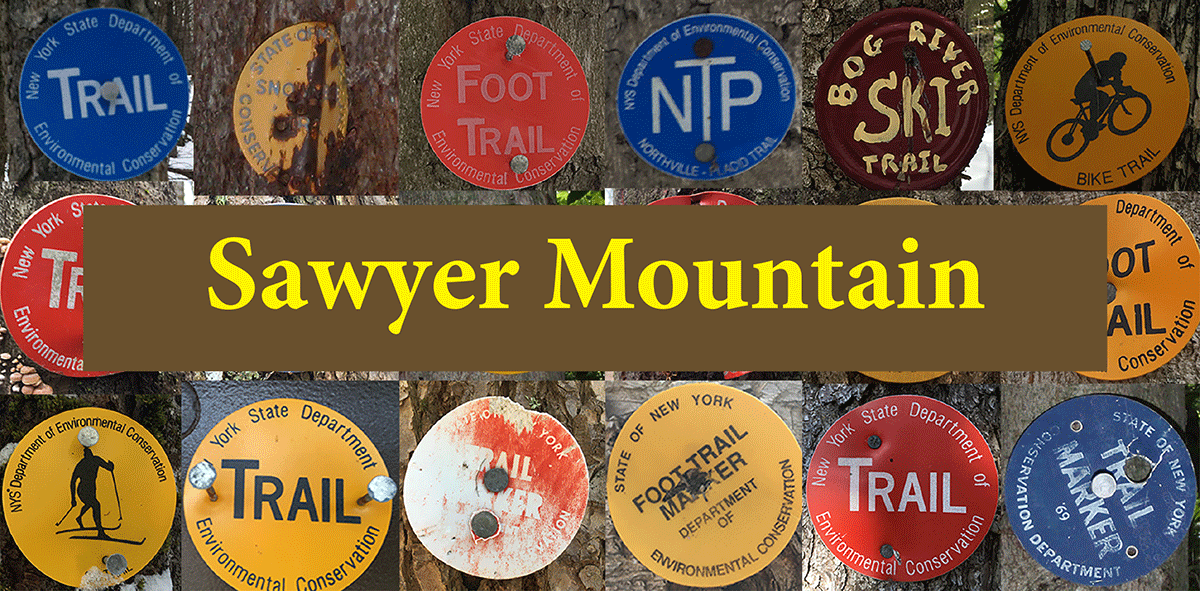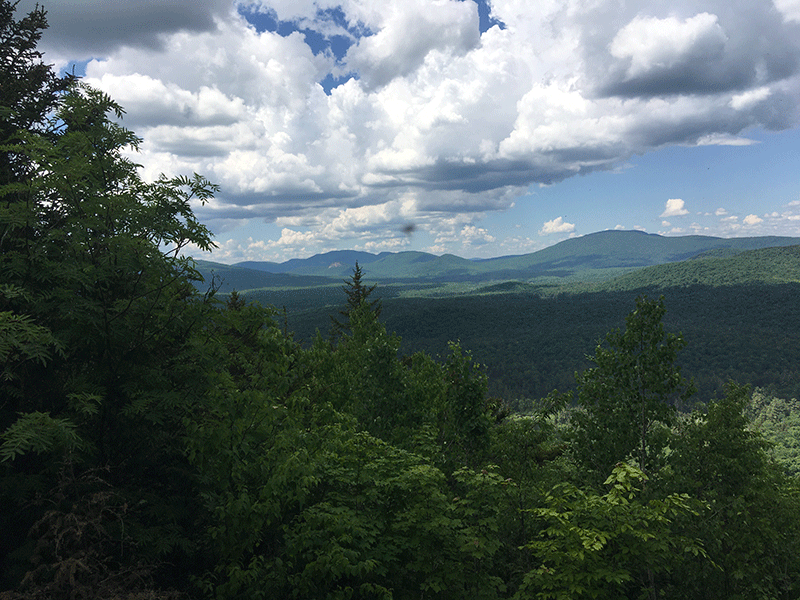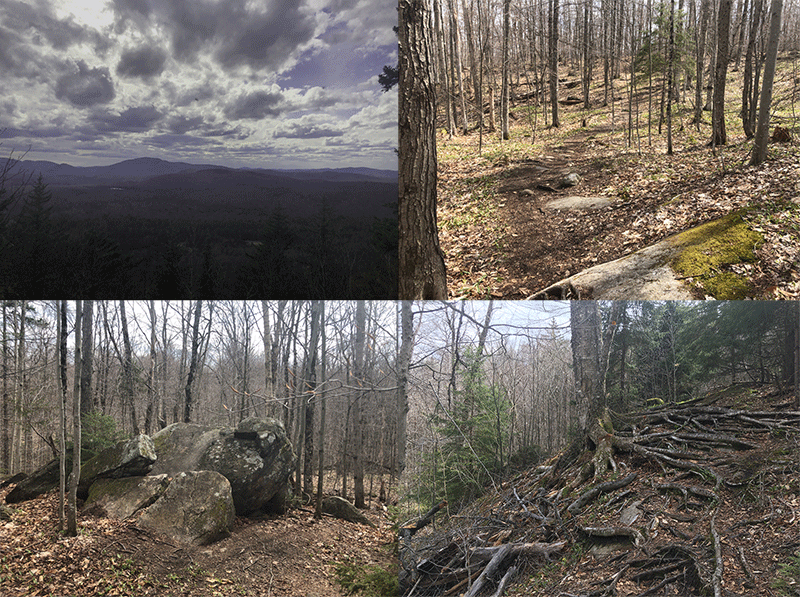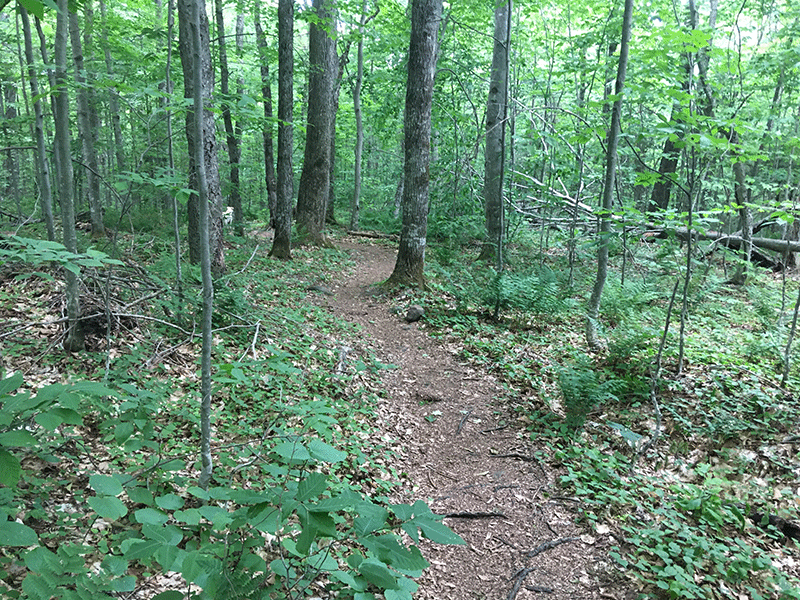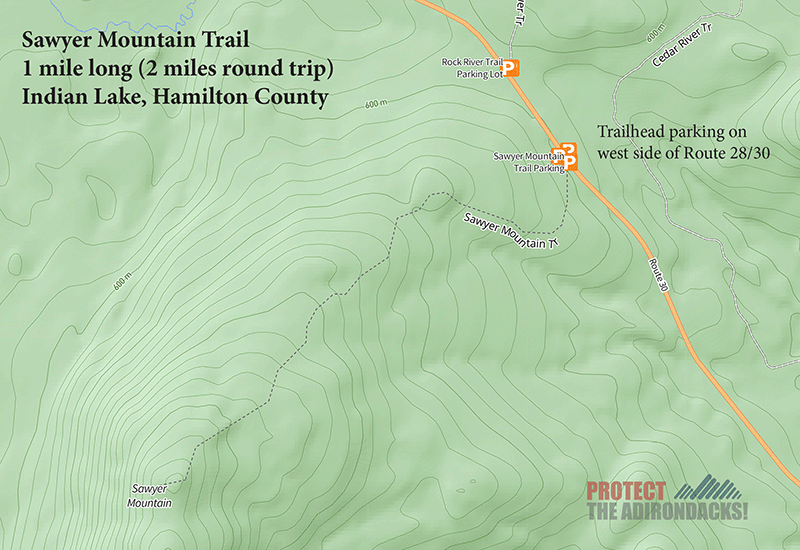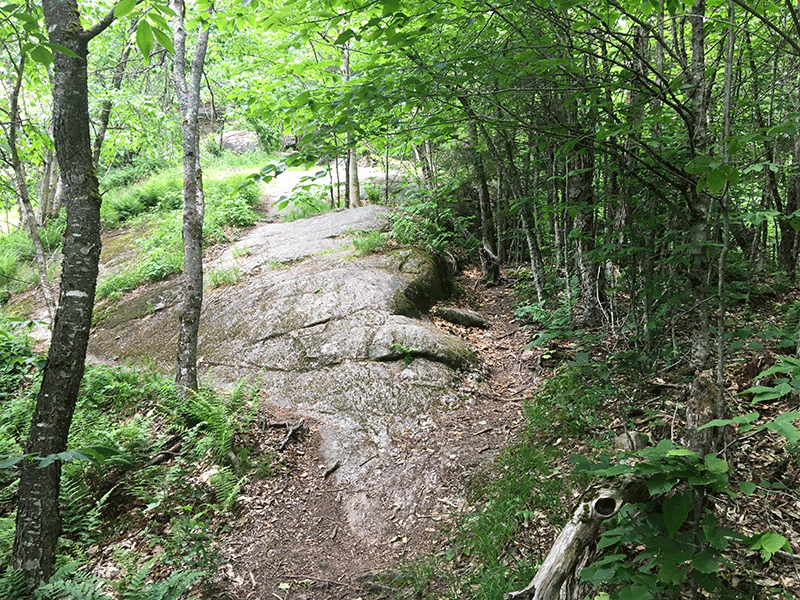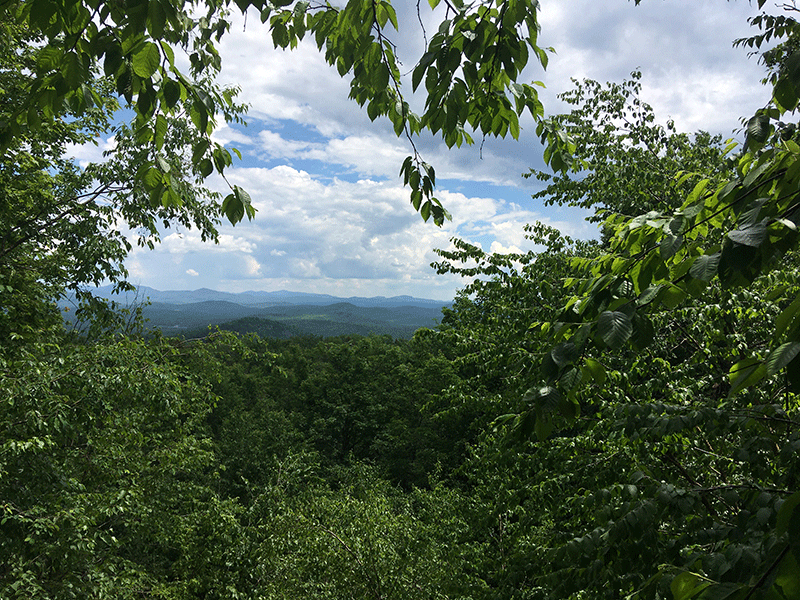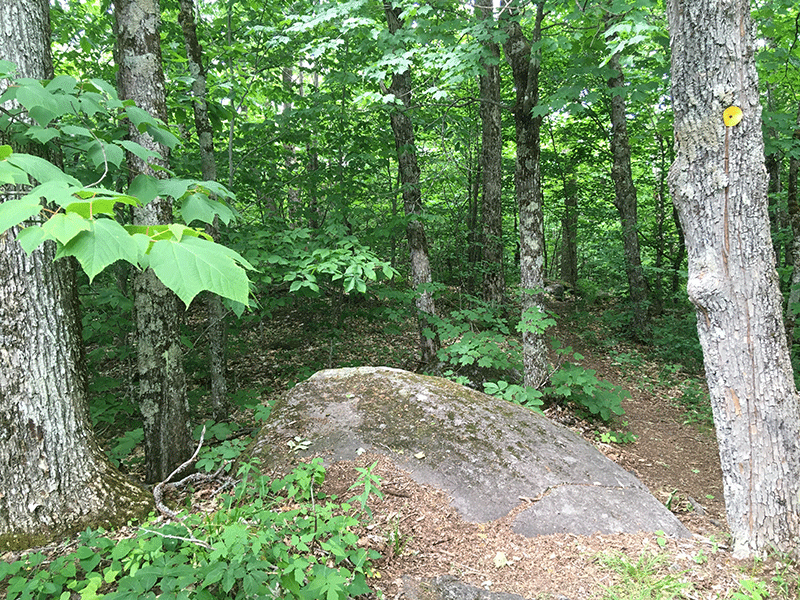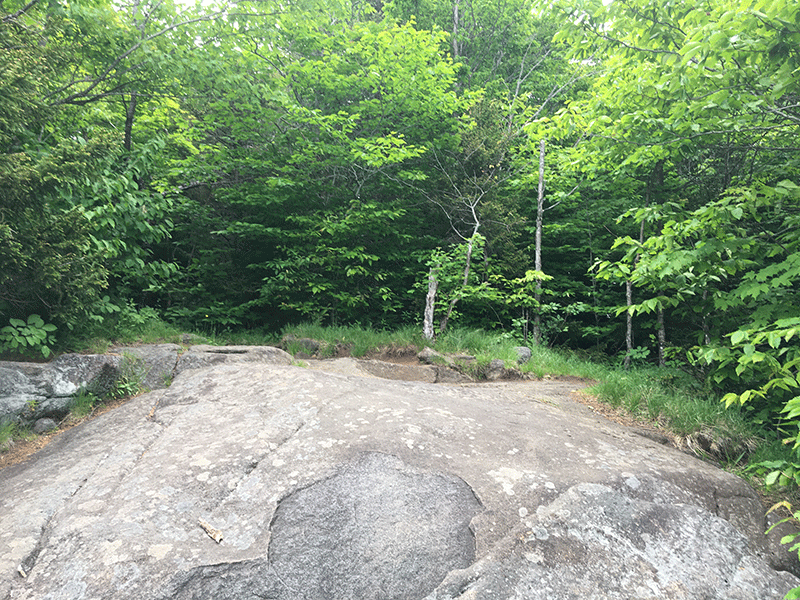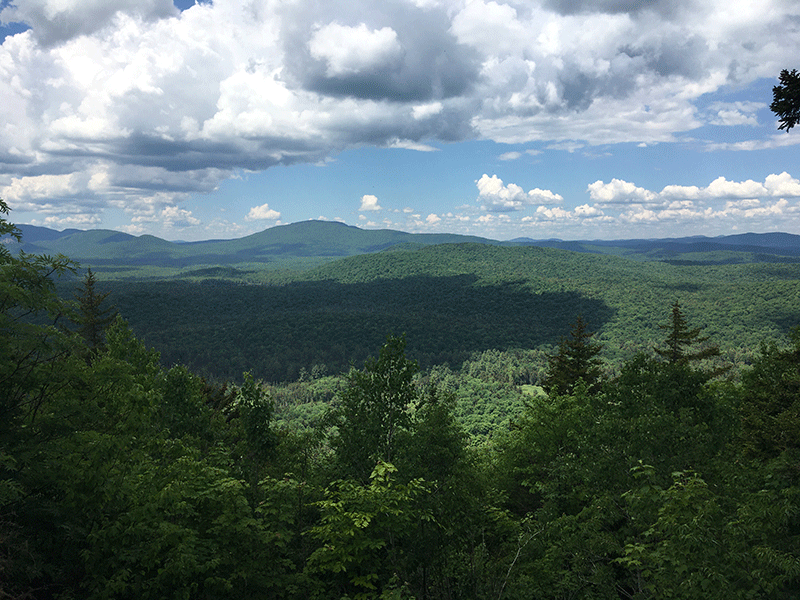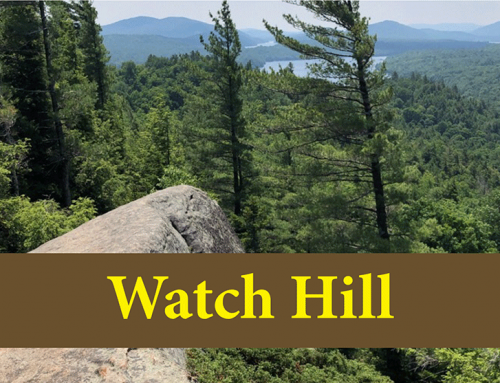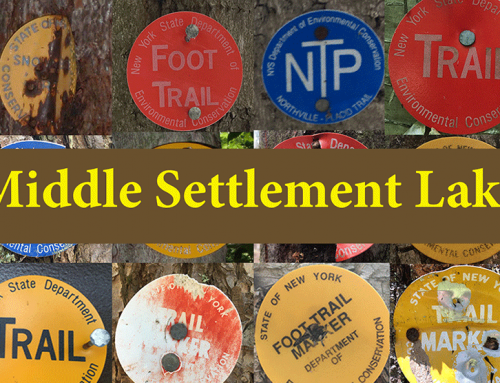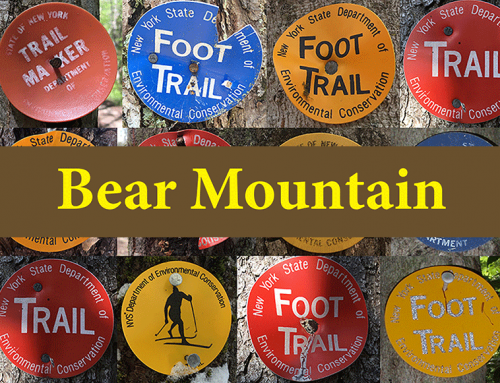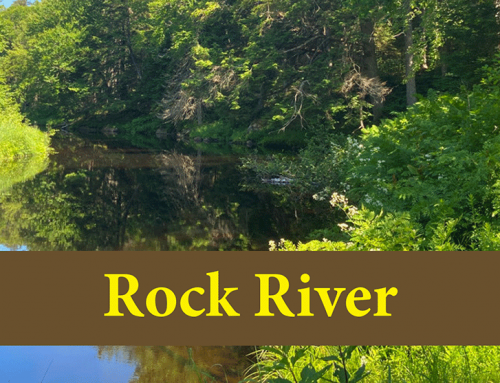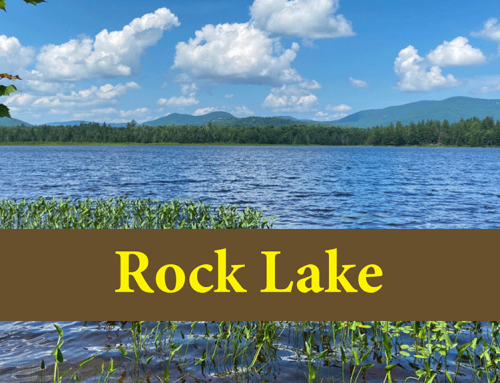Sawyer Mountain is a terrific easy and short hike in the central Adirondacks, accessed from NYS Routes 28/30 between Indian Lake and Blue Mountain Lake.
Sawyer Mountain
1 Mile (2 miles round trip)
Indian Lake, Hamilton County
Central Adirondack Park
Hiking, Snowshoeing
Hike Up Sawyer Mountain
The hike up Sawyer Mountain is short and enjoyable. Sawyer Mountain is a small mountain in Hamilton County. The trail is entirely on public Forest Preserve lands in the eastern edge of the Blue Ridge Wilderness Area. The trailhead is located on Routes 28/30 between Indian Lake and Blue Mountain Lake. The trail is an easy one-mile hike each way through predominantly hardwood forests culminating in a tree-covered summit with multiple bedrock outcroppings offering views to the north and east of the surrounding central Adirondack landscape. Sporadic sections of exposed bedrock as well as scattered boulders strewn throughout a forest of large, mature hardwoods make this an entertaining hike that offers a top-notch ratio between effort and reward.
The Sawyer Mountain Hiking Trail
The hike up Sawyer Mountain starts from a pull-off parking area on the west side of Routes 28/30. The trail follows a route through a classic Adirondack beech forest interspersed with white ash and the last of an older generation of white birch. In mid-May trout lilies and trilliums will join chipmunks and blackflies in welcoming passersby. The first half mile of the trail makes up less of the total elevation gain of the hike than the second. There are small ups and downs trending higher towards the summit. The trail is gentle, easy to follow, clearly worn, and well-marked.
Several hundred yards in, the forest changes from stands of young, small-diameter trees, to an older forest dominated by large, mature trees. Keep an eye out for black cherry and particularly large individuals of yellow birch and white ash. Hikers with sharp eyes may find a few smooth resilient beech trees whose bark is unaffected by prevalent beech bark disease. Approximately halfway through the hike there is a small and mossy wetland immediately south of the trail.
The second half of the trail sees more erosion on steep sections, with some muddy trenches, exposed bedrock, and staircases of tree roots. Besides one scramble up the roots of a massive yellow birch tree, the climb is not overly steep, but think about your traction on bare rock as you select equipment. The steepest sections of this trail are also the rockiest. Hikers may be clued into the proximity of the summit by a large patch of exposed bedrock on a short side trail that offers at its highest point the first expansive views of the hike, which includes views to the southeast of Gore and Crane Mountains.
The Sawyer Mountain Summit
The summit of Sawyer Mountain is thickly wooded and the forest understory is lush. There is no open area at the actual high point of the mountain, which is a large mound of bedrock on the trailside. The best view is just beyond the mountain summit from a large exposed rocky outcrop on the north side that frames a stunning view to the north of Wakely Mountain and Blue Ridge, and the forests and wetlands of the Blue Ridge Wilderness Area. The hike out follows the same route as the hike in.
There are no campsites along the Sawyer Mountain trail.
Click here to download a map and trail directions for Sawyer Mountain.
When You Hike Make Sure to Practice “Leave No Trace” to be Prepared and to Protect the Forest Preserve
Please follow “carry in, carry out” rules for all trash and follow other Leave No Trace principles when hiking in the public Forest Preserve and other wild areas. The seven Leave No Trace principles are: 1) Plan ahead and prepare; 2) Stay on hiking trails and camp at designated areas; 3) Dispose of human waste and trash properly; 4) Leave what you find; 5) Minimize campfires; 6) Respect wildlife; 7) Respect other hikers.
Educated hikers do not damage the environment. Prepared hikers do not need search and rescue unless injured.
Winter Use: The trail up Sawyer mountain is a fine trail for snowshoeing in the winter, and is a great trail for a beginner snowshoer. It is not recommended for cross-country skiing. In the cold months of early spring and late fall, micro-spikes would be useful on the steep sections and open bedrock.
Click here to become a member of Protect the Adirondacks.

